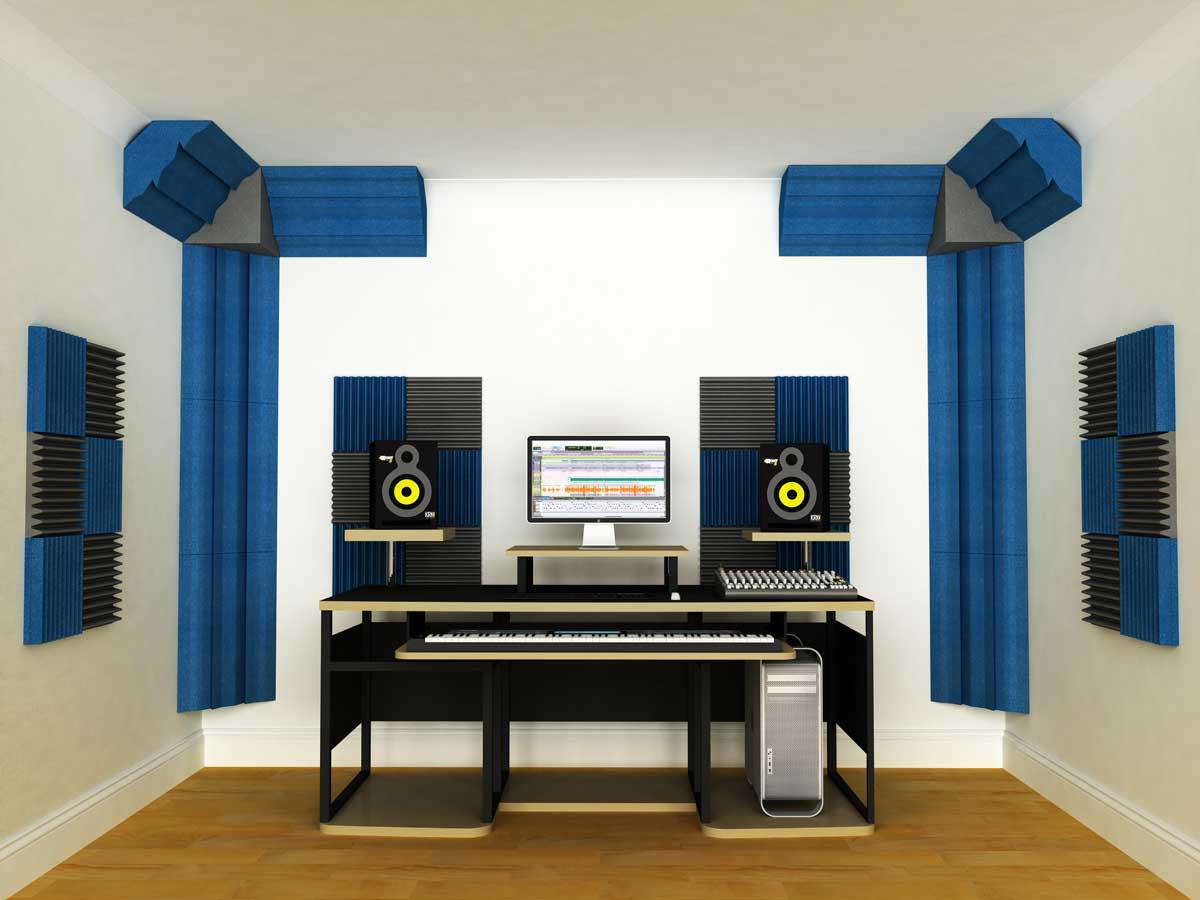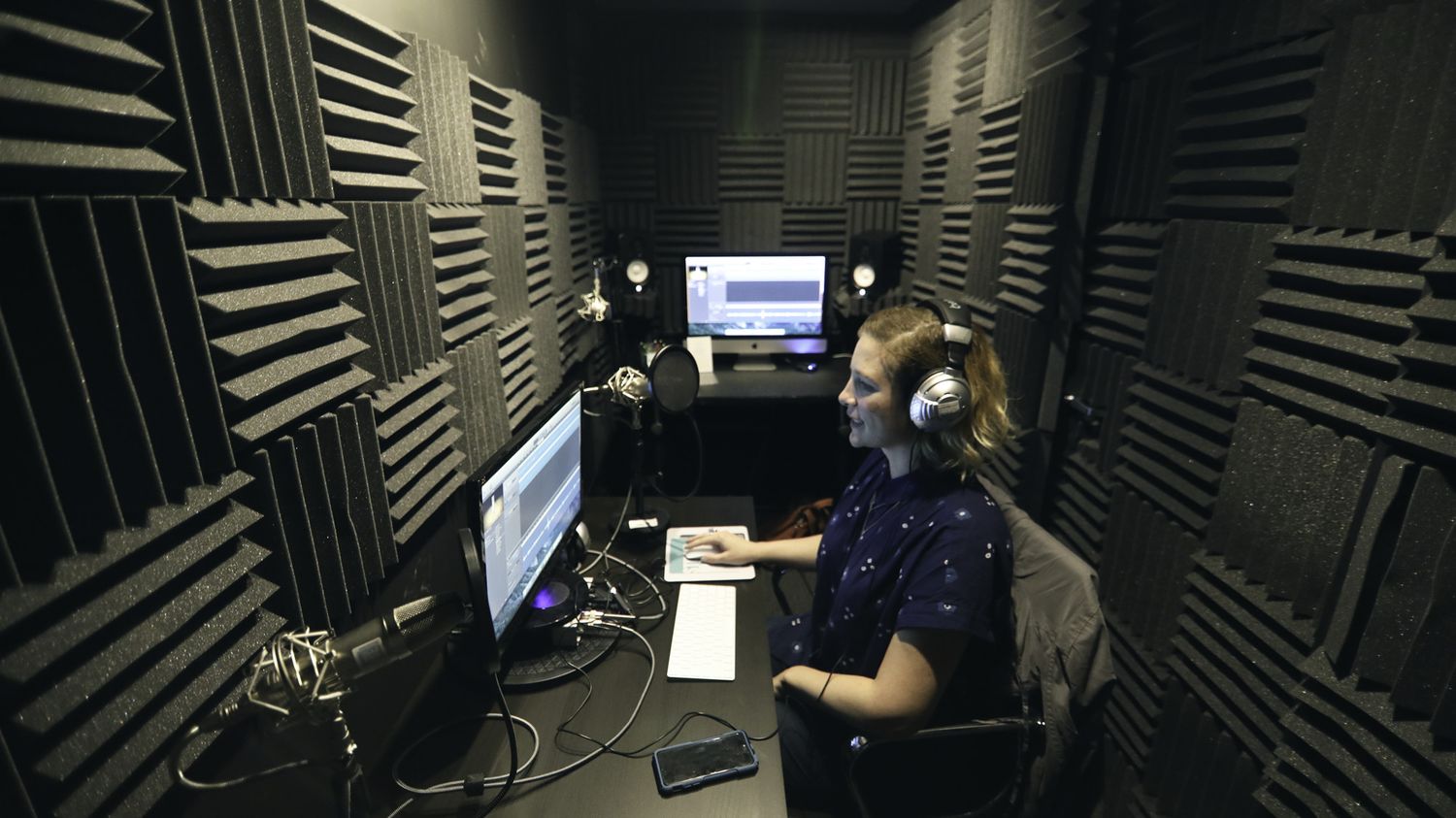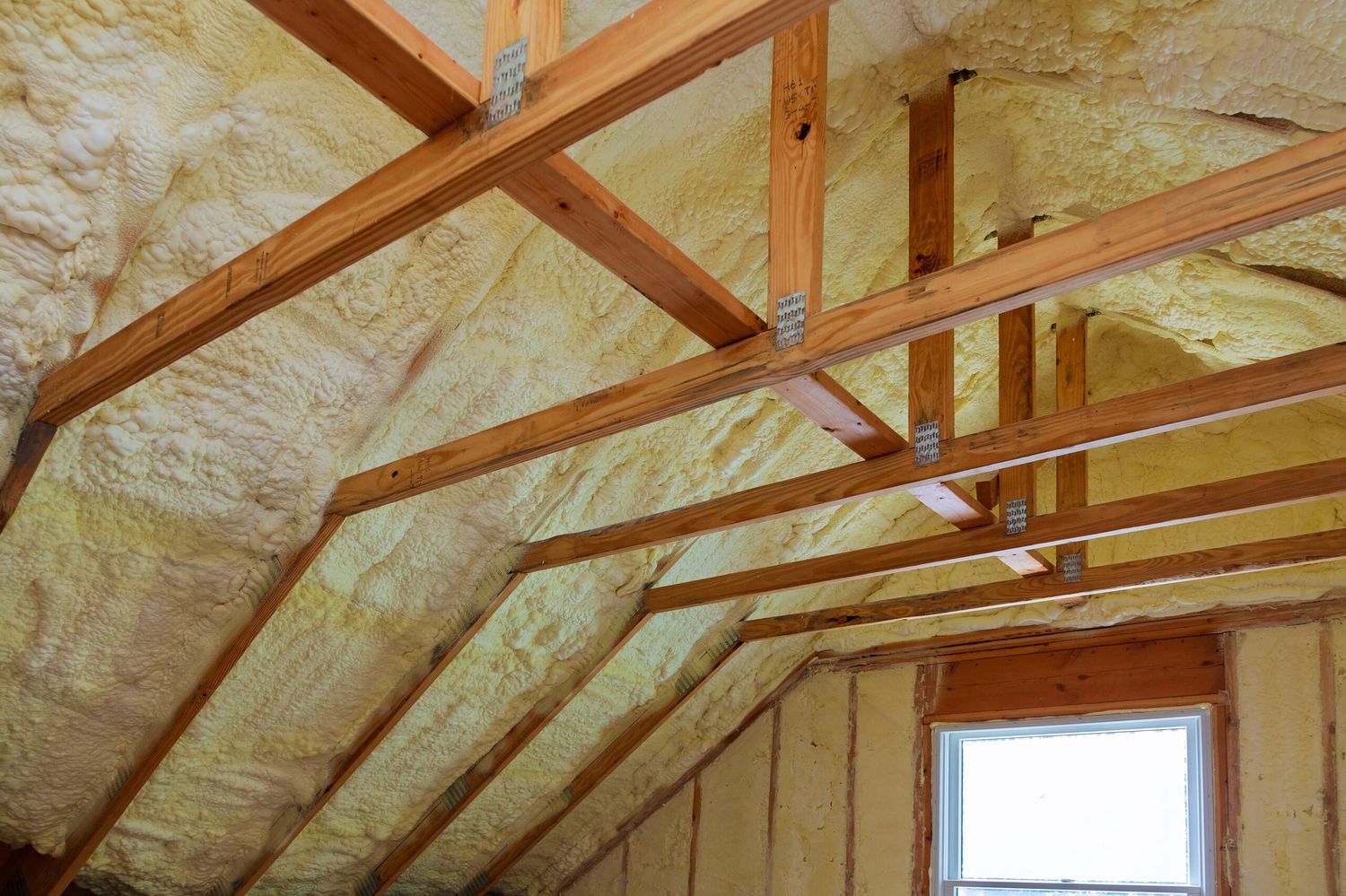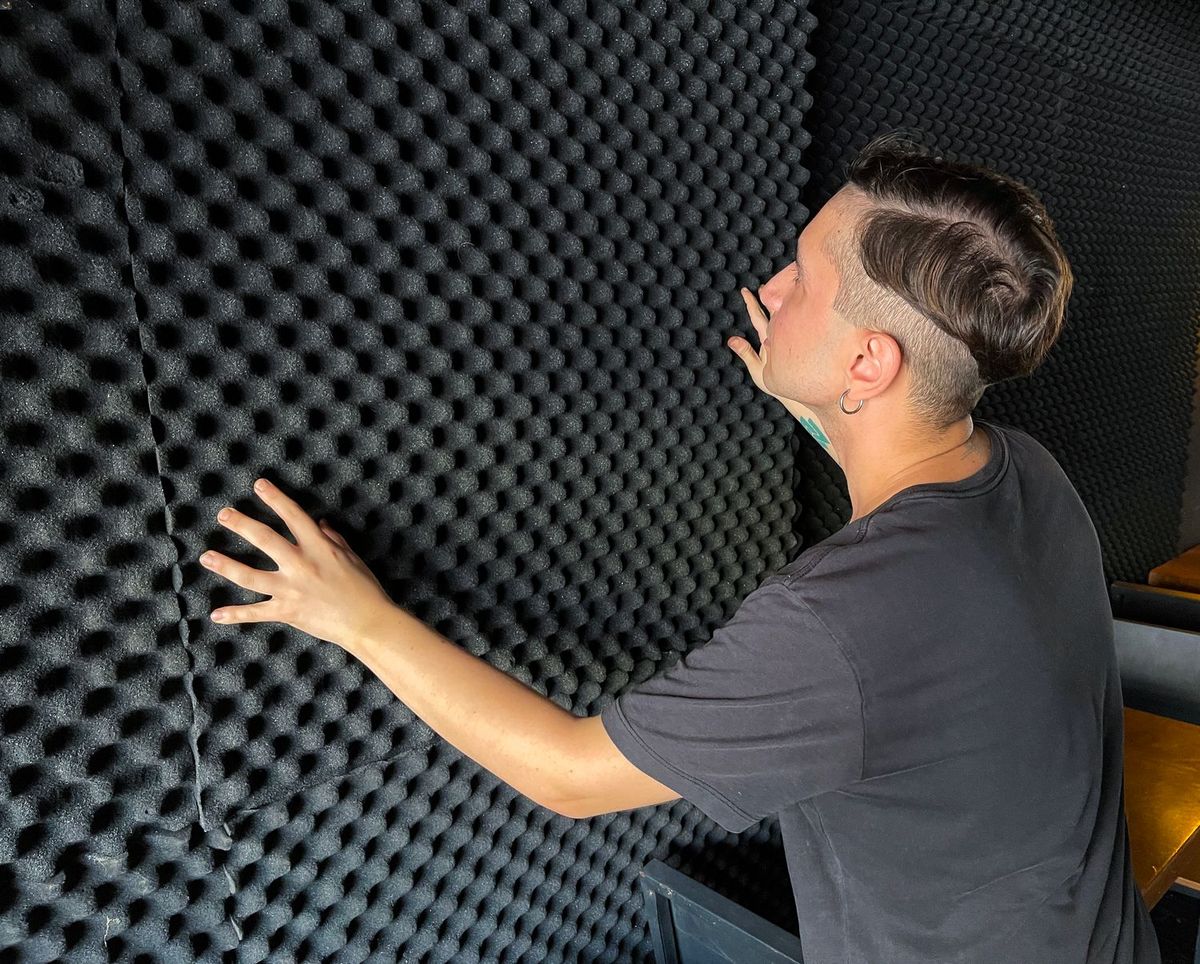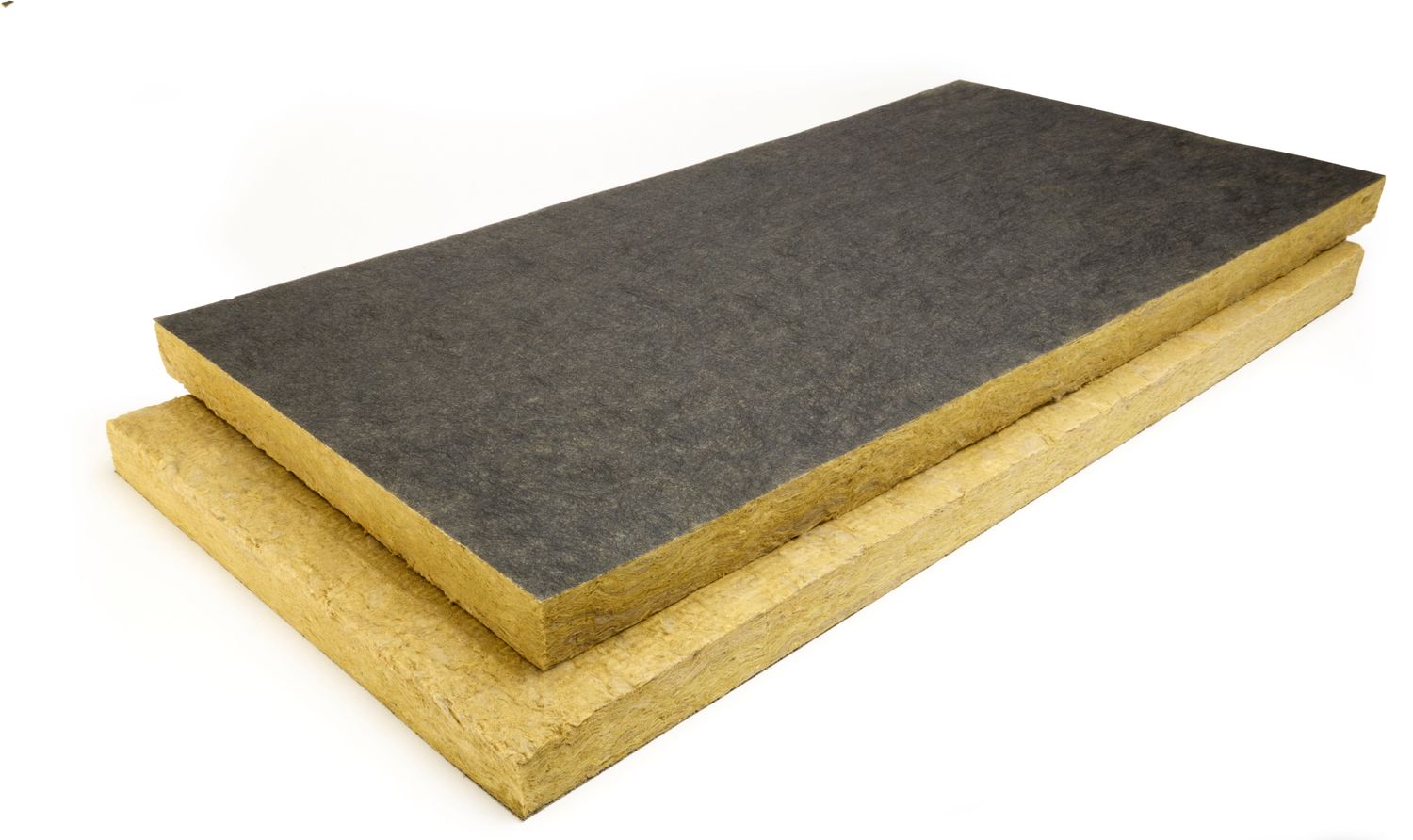Home>Production & Technology>Soundproofing>How Good Is Soundproofing Foam


Soundproofing
How Good Is Soundproofing Foam
Published: January 26, 2024
Discover the effectiveness of soundproofing foam in reducing noise and creating a tranquil environment. Find out if soundproofing foam is the solution you need for soundproofing your space.
(Many of the links in this article redirect to a specific reviewed product. Your purchase of these products through affiliate links helps to generate commission for AudioLover.com, at no extra cost. Learn more)
Table of Contents
- Introduction
- What is Soundproofing Foam?
- How Does Soundproofing Foam Work?
- Different Types of Soundproofing Foam
- Benefits of Soundproofing Foam
- Limitations of Soundproofing Foam
- Choosing the Right Soundproofing Foam
- Installation Techniques for Soundproofing Foam
- Maintenance and Care for Soundproofing Foam
- Frequently Asked Questions (FAQs)
- Conclusion
Introduction
Welcome to the world of soundproofing foam! In today’s busy and noisy world, finding peace and quiet can be a challenge. Whether you work from home and need a quiet space, want to reduce noise between rooms, or simply want to enjoy a peaceful environment, soundproofing foam can be a game-changer.
Soundproofing foam is a specialized material designed to absorb and block sound waves, reducing noise and creating a more tranquil space. It is commonly used in recording studios, home theaters, offices, apartments, and any other space where noise reduction is desired.
In this article, we will explore what soundproofing foam is, how it works, the different types available, and the benefits and limitations of using it. We will also discuss how to choose the right soundproofing foam for your needs, installation techniques, and proper maintenance and care.
Whether you are a sound engineer, a DIY enthusiast, or someone who simply wants to improve the acoustics of their space, this comprehensive guide will provide you with the knowledge and insights you need to make informed decisions about soundproofing foam.
So, let’s dive in and discover the wonderful world of soundproofing foam, and how it can transform your space into a haven of tranquility.
What is Soundproofing Foam?
Soundproofing foam, also known as acoustic foam or sound-absorbing foam, is a material designed to reduce or eliminate unwanted noise by absorbing sound waves. It is made from a specialized type of foam with unique properties that allow it to effectively dampen and dissipate sound energy.
Unlike traditional foam materials, such as memory foam or upholstery foam, soundproofing foam is specifically engineered to have excellent sound absorption qualities. It is often characterized by its open-cell structure, irregular shapes, and varying densities.
Soundproofing foam works by converting sound energy into heat energy through the process of absorption. When sound waves encounter the foam, they penetrate its surface and are trapped within the cells and voids of the foam material. As the sound waves travel through the foam, they encounter resistance and friction, which results in the dissipation of energy in the form of heat.
It’s important to note that soundproofing foam does not completely block sound. Instead, it reduces the intensity of sound waves, minimizes echoes and reverberations, and improves the overall acoustic quality of a space.
Soundproofing foam is available in various forms, including panels, tiles, sheets, and bass traps. These different forms provide flexibility in terms of installation options and can be used in a wide range of applications, from small home studios to large-scale commercial spaces.
Overall, soundproofing foam offers an effective and affordable solution for reducing noise and improving sound quality in any room. Whether you’re looking to create a quiet workspace, enjoy a more immersive audio experience, or simply want to decrease noise levels, soundproofing foam can make a significant difference.
How Does Soundproofing Foam Work?
Soundproofing foam works by utilizing its unique material properties and structural design to absorb and dissipate sound waves, reducing their intensity and diminishing unwanted noise.
The open-cell structure of soundproofing foam allows sound waves to enter the foam and travel through it. As the sound waves encounter the foam, they pass through the porous structure and come into contact with the foam’s surfaces. The irregular shapes and contours of the foam create multiple points of contact, increasing the surface area and providing more opportunities for sound absorption.
When the sound waves come into contact with the foam surfaces, they are not immediately reflected back into the room. Instead, the energy of the sound waves is converted into kinetic energy within the foam material. This conversion happens as the sound waves cause the air molecules within the foam’s cells to vibrate rapidly.
The friction and resistance within the foam material further dissipate the sound energy in the form of heat. As the sound waves continue to travel through the foam, they encounter more resistance, resulting in a continuous reduction of their intensity.
Soundproofing foam is also effective in reducing echoes and reverberations in a room. These phenomena occur when sound waves bounce off hard surfaces, such as walls, floors, and ceilings, causing a prolonged sound decay time. By strategically placing soundproofing foam in a room, you can absorb and reduce the reflections of sound waves, minimizing echoes and creating a more balanced acoustic environment.
The effectiveness of soundproofing foam depends on various factors, including the thickness and density of the foam, its placement, and the specific acoustic properties of the room. Generally, thicker and denser foam will provide better sound absorption. Additionally, combining multiple layers or using a combination of different foam types can enhance the overall soundproofing capabilities.
It’s worth noting that while soundproofing foam is highly effective in reducing airborne noise, it is less effective in blocking low-frequency sounds and vibrations. For situations where lower frequencies are a concern, additional soundproofing measures, such as mass-loaded vinyl or decoupling techniques, may be necessary.
In summary, soundproofing foam works by absorbing sound waves, converting their energy into heat, and reducing echoes and reverberations. The unique structure of the foam, combined with the principles of sound physics, allows for an effective reduction in noise levels and the creation of a more peaceful and acoustically balanced environment.
Different Types of Soundproofing Foam
When it comes to soundproofing foam, there are several different types available, each with its own unique characteristics and applications. Understanding the different types can help you choose the right foam for your specific soundproofing needs.
- Acoustic Panels: Acoustic panels are one of the most commonly used types of soundproofing foam. They are typically rectangular or square-shaped panels made from open-cell foam. These panels are designed to absorb sound waves and reduce echoes and reverberations. Acoustic panels come in various thicknesses and densities to accommodate different noise reduction requirements.
- Soundproofing Tiles: Soundproofing tiles are similar to acoustic panels but are often smaller in size. They can be square or hexagonal-shaped and are commonly used for decorative purposes, allowing for sound absorption while adding aesthetic appeal to a space. Soundproofing tiles are ideal for reducing echoes and improving the acoustics of smaller rooms or specific areas.
- Bass Traps: Bass traps are specifically designed to address low-frequency sound waves, which can be challenging to absorb. They are usually triangular-shaped foam wedges that are placed in corners where low-frequency sound tends to accumulate. Bass traps help to minimize bass resonance and improve the overall sound balance in a room.
- Egg Crate Foam: Egg crate foam, also known as convoluted foam, features a distinct egg crate pattern that increases the foam’s surface area. This type of foam is effective for both sound absorption and diffusion. It works by breaking up sound waves and reducing their intensity. Egg crate foam is commonly used in recording studios, broadcasting studios, and other environments where precise sound control is required.
- Pyramid Foam: Pyramid foam is similar to egg crate foam in terms of its surface design, but with a different shape. As the name suggests, pyramid foam has pyramid-shaped bumps that help trap and absorb sound waves. Pyramid foam is highly effective in reducing echoes and reverberations and is often used in home theaters, music studios, and soundproofed rooms.
- Wedge Foam: Wedge foam, also called wedge acoustic foam, is characterized by its triangular-shaped wedges. The angled surface of the foam helps in disrupting and absorbing sound waves, reducing reflections and improving acoustic performance. Wedge foam is commonly used in recording studios, control rooms, and live performance spaces.
It’s important to note that the effectiveness of each type of soundproofing foam can vary depending on factors such as foam density, thickness, placement, and the specific noise reduction requirements of the space. It’s recommended to consider the specific needs of your room and consult with a soundproofing professional to determine the most suitable type of foam for your project.
By selecting the right type of soundproofing foam, you can enhance sound control, reduce noise levels, and create a more peaceful and enjoyable environment.
Benefits of Soundproofing Foam
Soundproofing foam offers a range of benefits for both residential and commercial spaces. Whether you want to create a quiet home office, improve the acoustics of a recording studio, or reduce noise in a shared living environment, using soundproofing foam can provide numerous advantages.
- Noise Reduction: The primary benefit of soundproofing foam is its ability to effectively reduce noise levels. By absorbing and dissipating sound waves, it minimizes echoes, reverberations, and airborne noise, resulting in a quieter and more peaceful environment. The noise reduction provided by soundproofing foam enhances concentration, reduces distractions, and improves overall comfort in any space.
- Improved Acoustics: Soundproofing foam helps optimize room acoustics by reducing sound reflections and echoes. By absorbing excessive sound energy, it creates a more balanced and controlled auditory environment. This is particularly beneficial in spaces such as home theaters, recording studios, music rooms, and conference rooms where accurate sound reproduction and clarity are essential.
- Privacy: Soundproofing foam acts as a barrier to block sound transmission between spaces. This is beneficial in multi-unit dwellings, offices, or shared living areas where privacy is desired. It helps maintain confidential conversations, reduces noise disruptions, and ensures a peaceful coexistence among occupants.
- Enhanced Sound Quality: For rooms dedicated to audio recording or playback, soundproofing foam can significantly enhance sound quality. By reducing unwanted reflections and external noise, it allows for clearer sound reproduction, finer detail, and improved sound imaging. This is especially advantageous in recording studios, home theaters, and music production environments.
- Flexibility and Versatility: Soundproofing foam comes in various shapes, sizes, and forms, providing flexibility in installation. It can be easily cut, shaped, and adhered to different surfaces, making it suitable for a wide range of applications. Soundproofing foam can be used on walls, ceilings, doors, and floors, allowing for customized noise control solutions in different spaces.
- Aesthetically Pleasing: Soundproofing foam is available in different colors, textures, and designs, allowing it to blend seamlessly with the decor of any room. It can be visually appealing and adds a touch of elegance to the space while effectively improving acoustic performance.
From reducing noise pollution to enhancing sound quality and privacy, using soundproofing foam offers numerous benefits for residential, commercial, and recreational spaces. When properly selected and installed, it can transform any environment into a quieter and more enjoyable space.
Limitations of Soundproofing Foam
While soundproofing foam provides effective noise reduction and improved acoustics, it is important to be aware of its limitations. Understanding these limitations will help you set realistic expectations and make informed decisions when using soundproofing foam in your space.
- Low-Frequency Sound: Soundproofing foam is less effective at blocking low-frequency sounds, such as deep bass or vibrations. These types of sounds have longer wavelengths and require more substantial materials to be effectively absorbed or blocked. Additional soundproofing measures, such as mass-loaded vinyl or decoupling techniques, may be necessary to address low-frequency noise issues.
- Structural Sound Transmission: Soundproofing foam is designed to address airborne noise, such as voices or music. However, it may have limited impact on sound transmission through walls, floors, or ceilings. Structural sound transmission can still occur even with the use of soundproofing foam, especially in older buildings or spaces with poor insulation. Considering additional soundproofing methods, such as adding mass or creating a decoupled structure, may be necessary to tackle structural sound issues.
- Installation Considerations: Proper installation of soundproofing foam is crucial for optimal performance. Incorrect installation, such as leaving gaps or not using enough coverage, can compromise its effectiveness. Additionally, if the foam is not securely attached or if it deteriorates over time, its performance may diminish. Careful attention must be given to installation techniques, ensuring proper adherence and coverage for maximum sound absorption.
- Fire Safety Regulations: Some soundproofing foam materials may have limited fire resistance. It is important to verify that the foam used meets relevant fire safety regulations and building codes. If you have specific fire safety requirements, consider using fire-resistant foam or pairing soundproofing foam with fire-resistant barriers to ensure compliance and safety.
- Aesthetics and Room Design: While soundproofing foam can come in various colors and designs, it may not align with everyone’s aesthetic preferences. The distinctive look of foam panels or tiles may not fit seamlessly into every room design. However, there are options available that offer a balance between performance and aesthetics, allowing you to find a solution that suits your space.
- Health Concerns: Although soundproofing foam is generally safe to use, it is important to choose foam materials that are free from harmful chemicals, such as formaldehyde or volatile organic compounds (VOCs). These can potentially be released into the air and may cause health issues. It’s recommended to opt for foam products that are certified as meeting safety standards and have undergone rigorous testing for indoor air quality.
Considering these limitations will help you make informed decisions and take the necessary steps to address potential challenges when using soundproofing foam. Supplementing it with other soundproofing techniques and materials can provide a more comprehensive and effective noise control solution for your specific needs.
Choosing the Right Soundproofing Foam
Choosing the right soundproofing foam is crucial to achieving optimal noise reduction and improving the acoustics of your space. Here are some key factors to consider when selecting the right soundproofing foam for your specific needs:
- Noise Reduction Requirements: Determine the level of noise reduction you desire. Are you looking to reduce external noise from entering your space, or do you need to improve the acoustics within a room? Understanding your specific noise reduction goals will help you identify the appropriate foam type and thickness.
- Foam Type: Consider the different types of soundproofing foam available, such as acoustic panels, soundproofing tiles, or bass traps. Each type has specific features and benefits, so choose one that aligns with your requirements and desired aesthetics.
- Foam Density: Foam density plays a crucial role in determining its sound absorption capabilities. Generally, higher density foam provides better noise reduction. However, denser foam tends to be more expensive and may not be necessary for all applications. Evaluate the specific noise sources in your space to determine the appropriate foam density.
- Thickness: The thickness of the foam also affects its sound-absorbing properties. Thicker foam generally provides better noise reduction and absorption. Consider the available space for installation and balance the desired noise reduction with practicality.
- Installation and Application: Evaluate the installation requirements and consider the practicality of installation. Some foam products may require adhesive backing, while others can be simply mounted with adhesive strips or hung with hooks. Consider the surface where the foam will be installed and ensure compatibility with the foam’s attachment method.
- Budget: Set a budget for your soundproofing project. Soundproofing foam is available at various price points, so having a budget in mind will help you narrow down the options and make a cost-effective choice.
- Aesthetics: Consider the visual impact of the foam in your space. Soundproofing foam comes in a variety of colors, designs, and finishes. Choose a foam that complements the overall aesthetics of the room or consider options that can be covered with fabric for a more discreet appearance.
- Environmental and Health Considerations: If you have specific environmental or health concerns, such as the use of eco-friendly materials or the avoidance of harmful chemicals, look for soundproofing foam that meets relevant safety standards and certifications.
It is advisable to consult with a soundproofing professional for guidance and recommendations tailored to your specific needs. They can provide expert advice on the most suitable foam type, density, and installation techniques to ensure the best possible results.
By carefully considering your noise reduction requirements, foam type, density, installation, budget, and aesthetics, you can choose the right soundproofing foam that will effectively address the noise issues and enhance the acoustics of your space.
Installation Techniques for Soundproofing Foam
Proper installation of soundproofing foam is essential to ensure optimal noise reduction and acoustic performance. Here are some key installation techniques to consider when using soundproofing foam:
- Clean and Prepare the Surface: Before installing the foam, ensure that the surface is clean, dry, and free from dust and debris. This will ensure better adhesion and longevity of the foam.
- Measure and Plan: Measure the area where you want to install the soundproofing foam and plan the layout. Consider the dimensions of the foam panels or tiles and make any necessary adjustments or cuts before installation.
- Attachment Methods: Soundproofing foam can be attached using various methods, such as adhesive backing, adhesive strips, hooks and loops, or specially designed mounting brackets. Follow the manufacturer’s instructions for the recommended attachment method and ensure proper adhesion to the surface.
- Strategic Placement: Determine the strategic placement of the soundproofing foam for optimal noise reduction. Focus on areas where soundwaves are most likely to bounce or reflect, such as walls, ceilings, corners, and doors. Consider the positioning of furniture and other objects in the room to maximize the foam’s effectiveness.
- Overlap or Gap Coverage: When installing multiple foam panels or tiles, ensure there is proper overlap or gap coverage between them to minimize sound leakage. This will help to create a continuous barrier for sound absorption.
- Sealing and Closing Gaps: Pay attention to sealing and closing any gaps or openings in the foam installation. Gaps can allow sound leakage and reduce the performance of the soundproofing foam. Use foam sealant or acoustic caulks to seal any cracks or openings.
- Combining Foam Types: Consider combining different types of soundproofing foam to address specific noise issues. For example, using bass traps in corners or thicker panels near loud and low-frequency noise sources can enhance overall sound reduction.
- Experiment and Adjust: Soundproofing foam installation may require some experimentation and adjustments to achieve the desired noise reduction results. Fine-tune the foam placement and arrangement as needed, and listen carefully to any changes in the acoustic quality of the room.
- Professional Assistance: For complex or large-scale soundproofing projects, it is recommended to seek professional assistance. Soundproofing experts can provide valuable advice, ensure proper installation techniques, and help achieve the best possible noise reduction and acoustic performance.
Remember to follow the manufacturer’s instructions for the specific soundproofing foam you are using. They may have specific recommendations or guidelines for installation based on the product’s features and properties.
By implementing these installation techniques, you can ensure the soundproofing foam is properly installed and maximize its effectiveness in reducing noise and improving the acoustics of your space.
Maintenance and Care for Soundproofing Foam
Maintaining and caring for soundproofing foam is essential to ensure its longevity and continued effectiveness in reducing noise and improving acoustics. Here are some key maintenance and care tips for soundproofing foam:
- Regular Dusting: Dust can accumulate on the surface of the foam over time, impacting its performance. Regularly dust the foam using a soft brush or a vacuum cleaner with a brush attachment. This will help maintain the foam’s sound-absorbing properties.
- Spot Cleaning: If the foam becomes stained, spot clean it using a mild detergent mixed with water. Gently blot the stained area with a clean cloth or sponge. Avoid harsh chemicals or abrasive cleaners, as they can damage the foam.
- Avoid Direct Sunlight: Prolonged exposure to direct sunlight can cause the foam to degrade or discolor over time. Avoid placing soundproofing foam in areas where it will be continuously exposed to sunlight or strong UV rays. If necessary, use curtains or blinds to protect the foam from direct sunlight.
- Avoid Moisture and Humidity: Excessive moisture or humidity can promote the growth of mold or mildew on the foam. Keep the foam in a dry environment and avoid installing it in areas prone to moisture, such as bathrooms or kitchens. If the foam does get damp, allow it to fully dry before reinstalling or using it.
- Inspect for Wear and Tear: Regularly inspect the foam for any signs of wear and tear, such as cracks, tears, or crumbling. If you notice any damage, consider replacing the affected foam to maintain optimal noise reduction and acoustic performance.
- Repositioning: Over time, you may find that adjusting or repositioning the foam can optimize its sound absorption. Experiment with different placements to ensure the foam is effectively reducing unwanted noise and echo in the desired areas.
- Replacement: While soundproofing foam is durable, it may need to be replaced over time, especially if it shows signs of significant wear or damage. The lifespan of the foam will vary depending on its quality, usage, and environmental conditions. If the foam becomes ineffective or loses its shape, consider replacing it to maintain optimal noise reduction.
- Professional Cleaning: In some cases, soundproofing foam may require professional cleaning, especially if it is heavily soiled or stained. Professional cleaning services can safely and effectively clean the foam, restoring its appearance and performance.
It’s important to follow the manufacturer’s instructions for specific cleaning and care recommendations for your soundproofing foam. Different foam products may have different maintenance requirements.
By implementing these maintenance and care practices, you can ensure the longevity and continued effectiveness of your soundproofing foam, creating a quieter and more acoustically balanced space.
Frequently Asked Questions (FAQs)
Here are answers to some commonly asked questions about soundproofing foam:
- Q: How effective is soundproofing foam in reducing noise?
- Q: Can soundproofing foam completely eliminate all noise?
- Q: Can soundproofing foam block low-frequency sounds?
- Q: Where should soundproofing foam be installed?
- Q: Can I install soundproofing foam myself?
- Q: Can soundproofing foam be reused if I move to a new space?
- Q: How do I clean soundproofing foam?
- Q: Are there any safety concerns with soundproofing foam?
A: Soundproofing foam is designed to absorb and dissipate sound waves, reducing noise levels and improving acoustics. While it can significantly reduce airborne noise and echoes, its effectiveness may vary depending on factors such as foam density, thickness, and the specific noise source.
A: Soundproofing foam is highly effective in reducing noise, but it cannot completely eliminate all sound. It minimizes noise levels by absorbing and dissipating sound waves, reducing echoes and reverberations. However, complete noise elimination might require additional soundproofing measures.
A: Soundproofing foam is less effective in blocking low-frequency sounds, such as deep bass or vibrations, as they require more substantial materials for absorption. Combining soundproofing foam with other techniques like mass-loaded vinyl or decoupling can help address low-frequency noise issues.
A: Soundproofing foam can be installed on walls, ceilings, doors, and other surfaces that are significant contributors to noise reflection. Strategic placement near sound sources or in areas where echoes are prominent, such as corners, can enhance its effectiveness.
A: Yes, soundproofing foam can be installed as a DIY project. The foam is typically lightweight and easy to cut and attach using adhesive backing or mounting options provided by the manufacturer. However, for more complex installations or large-scale projects, it may be beneficial to seek professional assistance.
A: Soundproofing foam can usually be reused if it is in good condition. However, consider the adhesive used to attach the foam, as it may lose its effectiveness after removal. It is advisable to assess the condition of the foam and adhesive before reusing it in a new space.
A: Soundproofing foam can be dusted regularly using a soft brush or vacuum cleaner with a brush attachment. For spot cleaning, use a mild detergent mixed with water and gently blot the stained area. Avoid harsh chemicals or abrasive cleaners, as they can damage the foam.
A: Some foam materials may release harmful chemicals or VOCs into the air. It is important to choose soundproofing foam that meets safety standards and certifications for indoor air quality. Additionally, ensure proper fire safety compliance by using foam materials that are fire-resistant or by pairing the foam with fire-resistant barriers.
If you have additional questions or require more specific information, it is recommended to consult with a soundproofing professional who can provide expert guidance tailored to your particular situation.
Conclusion
Soundproofing foam is a valuable tool for creating a quieter and more acoustically balanced environment. By absorbing and dissipating sound waves, it reduces noise, minimizes echoes, and improves overall sound quality in various spaces.
In this comprehensive guide, we explored what soundproofing foam is, how it works, and the different types available. We also discussed the benefits it offers, such as noise reduction, improved acoustics, privacy, and enhanced sound quality. However, it’s important to acknowledge the limitations of soundproofing foam, such as its reduced effectiveness in blocking low-frequency sounds and structural sound transmission.
When choosing soundproofing foam, consider factors such as noise reduction requirements, foam type, density, installation techniques, budget, and aesthetics. Proper installation is crucial for optimal performance, and regular maintenance and care will ensure the longevity and continued effectiveness of the foam.
While soundproofing foam alone might not completely eliminate all noise, it is an effective solution for reducing unwanted sounds and creating a more peaceful environment. For complex or large-scale projects, it is advisable to seek the assistance of soundproofing professionals who can provide specialized knowledge and experience tailored to your specific needs.
By understanding the principles of soundproofing foam and incorporating the techniques outlined in this guide, you can transform your space into a haven of tranquility where unwanted noise is minimized, and the enjoyment of sound is maximized.

